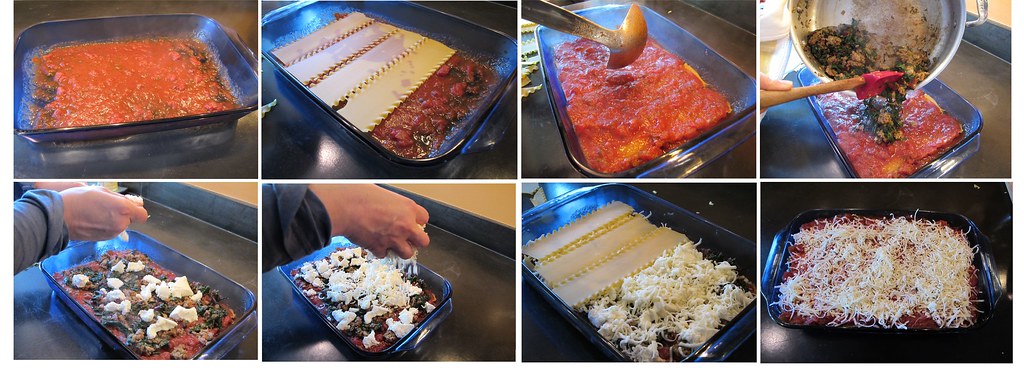Empanadas
serves 2 for dinner, more as an appetizer
Dough:
2 cups all purpose Flour
1 t baking powder
1 t salt
1/2 stick butter (cut into small pieces)
1/2 c cold water
Filling:
1/2 a large yellow onion, diced
4 cloves of garlic, diced
1/2 pound beef (or maybe mushrooms or beans)
1/2 t ground cumin
1/2 t paprika
2 T fresh oregano
cayenne and salt to taste
1 T tomato paste
3 cups hearty greens (kale, chard, spinach), cut into bite-sized pieces.
First make the dough (or substitute frozen pie crust):
- In a bowl, combine flour, baking powder, and salt. Using your fingers, cut in the butter until the mixture is crumbly. Add cold water and mix with a wooden spoon so the dough comes together.
- Turn out dough onto a lightly floured work surface and knead 2 or 3 times to form a smooth ball.
- Flatten with the heel of your hand then roll out to a thin sheet (about 1/8 inch thick).
- Cut into circles with a bowl or cup (depending on what size you want).
- Saute the onions and garlic in a little olive oil. When they've just started to brown, add the meat (either ground beef or a steak cut into small pieces). Cook until the meat is just done (about 5 minutes).
- Add the tomato paste and spices and cook until things start to stick. Then add the greens and all their moisture will make things unstick (or add a smidge of water if this doesn't work).
- Cook the greens for about 5 minutes. You want the filling to be moist, but not too wet.
- Put a little filling on half of each dough circle. I've learned (from many empanadas that wouldn't close) to start with half as much filling as I think it will take.
- Dip your finger in a cup of water and use that to wet the edge of the dough. This will help it stick when you fold over and pinch or fork the edges closed.
- I haven't tried it yet, but I've heard that these freeze really well at this stage. You don't even need to thaw them, just take them out of the freezer and continue.
- If you want, you can beat an egg and brush this on the tops of the sealed empanadas. Then bake at 400 for about 20 minutes, or until they are golden brown. Serve with hot sauce, chimichurri, homemade sour cream, or whatever you like.











